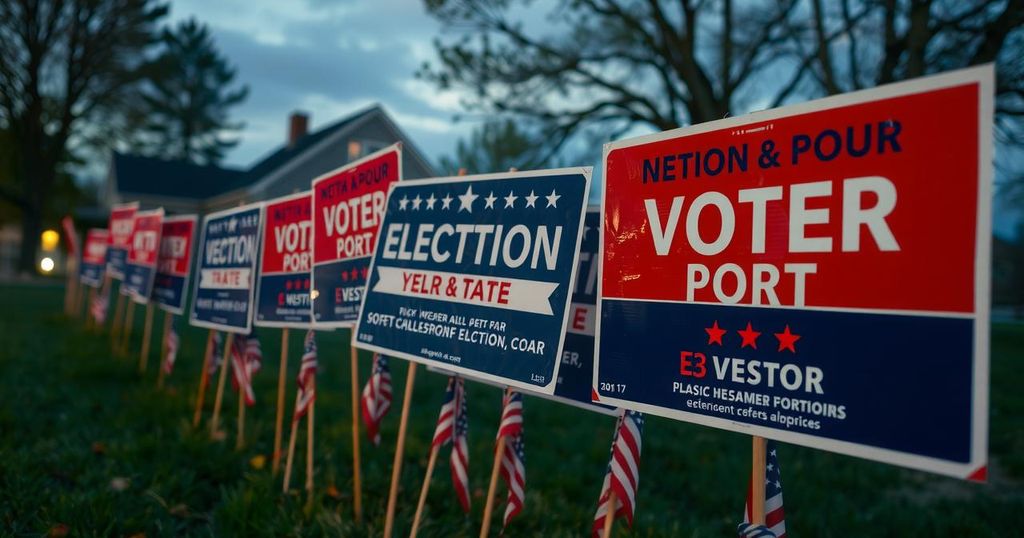Through My Lens: The Significance of Yard Signs in American Elections
This article reflects on the unique aspects of American election culture, particularly the significance of yard signs in expressing political preferences. It contrasts the informality and accessibility of this tradition in the U.S. with more formal political advertising seen in other countries, emphasizing how such expressions help individuals engage in the democratic process. The author, a newcomer to America, shares their personal journey of becoming an active participant in this system, highlighting the empowerment that comes from voting and civic expression.
As an individual acclimatizing to life in the United States, particularly in Maine, I have encountered various aspects of the electoral process that have captivated my fascination. This marks my second presidential election experience, allowing me a unique perspective on the notable contrasts between American elections and those I have observed elsewhere in the world. My inaugural voting experience in 2020, amidst the contest between Donald Trump and Joe Biden, was a mix of exhilaration and anxiety. As I stand on the brink of yet another election, I find myself grappling with the same feelings regarding the outcome, while simultaneously embracing the excitement that accompanies the act of voting. One of the most intriguing elements of American elections that I have come to appreciate is the prevalence of yard signs. They appear prominently throughout the neighborhoods and rural landscapes of Maine, resembling seasonal blossoms that emerge as the election period approaches. These signs not only inform me about local candidates running for various positions, from school boards to Congress, but they also offer a glimpse into the political orientations of my neighbors, who publicly endorse their preferred presidential candidates or political parties. This year, I proudly joined this American tradition for the first time, displaying a Harris-Walz sign in my yard, while nearby residents exhibit their support with Trump-Vance signs. There is a peculiar joy found in traversing the local area and tallying the signs, transforming it into a delightful activity. This relatively simple yet bold method of expressing political opinions is distinct from anything I have witnessed in other countries. During my time in Nairobi, Kenya, the atmosphere surrounding presidential elections was starkly different, devoid of yard signs. Instead, there were grand billboards and banners showcasing candidates’ images, dominating public spaces and even modes of public transportation. While visually impactful in its own right, this approach lacked the personal touch inherent to the American yard sign tradition. In my view, these signs serve as an extension of individual identity, publicly declaring, “I believe in this candidate, and I want you to know.” What I find particularly striking is the level of informality and accessibility associated with this custom. In the United States, one does not need to be a part of a political elite to voice their opinion; a mere yard sign can communicate a message as effectively as a large political rally. This phenomenon underscores a vital principle: every voice holds value, and individuals do not require wealth or influence to proclaim their hopes for their community or country. As I navigate the complexities of being a new citizen, these yard signs transcend mere political advertising; they encapsulate the very spirit of democracy—serving as visual reminders of the rights I have diligently worked to attain. In many regions around the globe, elections can evoke dread and strife. However, in the U.S., despite the inherent stress and anxiety that accompanies election seasons, there exists an overarching sense of freedom, empowerment, and pride. I am now an active participant in a democratic system that allows for personal expression through the simple act of placing a sign in my yard. While the fervor of U.S. election cycles can be protracted and intense, the unique blend of anticipation, excitement, and occasional stress characterizing this time provides a distinctively American experience. It is heartening to witness a culture that fosters visible civic engagement, encouraging individuals to participate in open discussions and debates. As I prepare to engage in my second presidential election, I carry forward the lessons gleaned from my inaugural experience—patience, hope, and the awareness that my vote holds significance. The yard sign adorning my front lawn may seem modest, yet it symbolizes my transformative journey: from an observer to an active participant in the democratic discourse. This transformation is notably special and deeply meaningful.
The article provides an insight into the political landscape of American elections, particularly focusing on the tradition of yard signs used by citizens to express their political preferences. It draws a comparison between election practices in the United States and other countries, highlighting the unique aspects of American democracy and the accessibility it provides for political expression. The experience of the author, as a new citizen, encapsulates the personal significance of participating in elections and the cultural practices that make civic engagement tangible and visible.
In summation, the exploration of yard signs reflects more than mere political signaling; it embodies the principles of democracy and the empowerment of individual voices in the political arena. The author’s journey, transitioning from an observer to a participant in American elections, underscores the profound significance of civic engagement and the pride associated with such involvement. The yard sign stands as both a personal statement and a broader commitment to the democratic values that underpin American society.
Original Source: www.pressherald.com




Post Comment